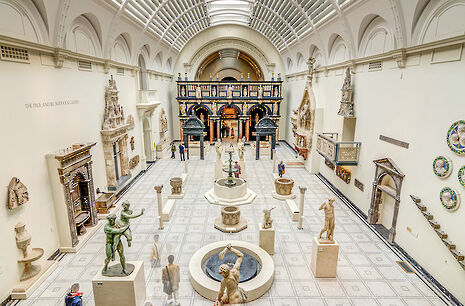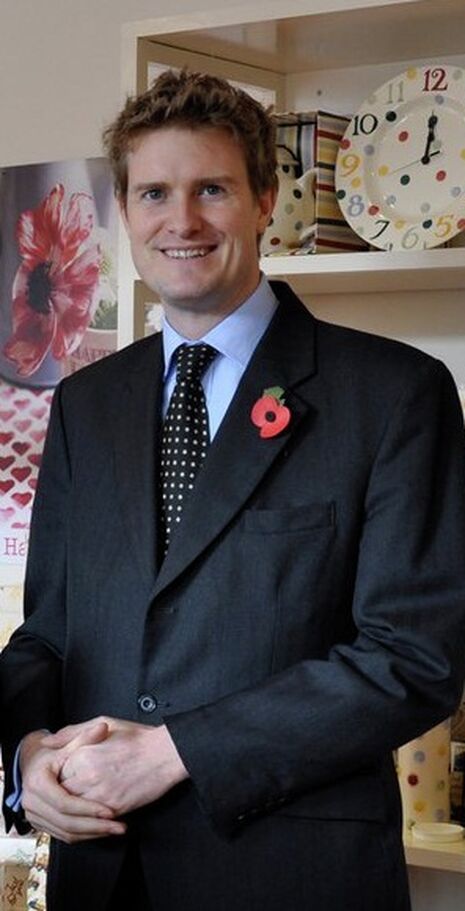Can Tristram Hunt direct the V&A?
Judy Zhou considers that ex-politican Tristram Hunt might be more qualified to direct the Victoria and Albert Museum than was initially anticipated

Earlier this year, the Victoria and Albert Museum announced Tristram Hunt as its new director. Hunt, a former Labour MP for Stoke-on-Trent, accepted the job as ‘brings together all [his] life passions of education, historical scholarship, meshing past with the present and public engagement.’ Apart from his disappointment of the Labour leadership, Hunt’s resignation letter, however, primarily focused on his achievements in the cultural and educational sectors of his constituency.
There are few clues as to what Hunt’s policies for the V&A will be. His previous comments on art and culture, however, has raised a few eyebrows. In 2011, he wrote in a Guardian article that ‘we need to start charging for museums and galleries again.’ This sounds alarming to art-lovers who benefit from the public cultural sector, but as Isaac Kaplan from Artsy points out, Hunt was merely proposing that the pros of reintroducing entry fees outweigh the cons – the money generated from popular London museums could be funded into the underfunded localities. In the same Guardian article, he highlighted the inequality between regional and London museums, as small, local institutions, such as the Potteries Museum and Art Gallery in Stoke-on-Trent, struggled with governmental budget cuts. He pointed out that like the Uffizi, Prado and Metropolitan Museum of Art, it is unlikely that London institutions would lose visitors as a result of entry fees. Now that he is leaving his work with regional museums, how will Hunt fare in one of the most prestigious and popular museums in London?
While we have no solid picture of his directorship, it is rather early to deny Hunt’s potentials on the role. Firstly, Hunt has already proved himself to be a keen protector of the arts. He is a patron of the British Ceramics. He campaigned to save the Wedgwood Museum from being sold off – the collection now belongs to the V&A. He was also a former judge for the annual Museum of the Year award and a serving trustee of the Heritage Lottery Fund. We must also bear in mind Hunt’s academic career. He worked as a cultural historian before becoming an MP, and is currently a fellow of the Royal Historical Society.

It is difficult to predict if Hunt will rival the success of his peers and predecessors. One may not expect a former MP becoming the director of one of the nation’s most prized museums. But the public cultural sector has produced much celebrated names from unconventional appointments. As early as 1987, the National Gallery appointed Neil MacGregor as its director, who only took up art history fairly late in his career. Before that, he read languages, then philosophy and nearly became a lawyer. Though he was a rank outsider, MacGregor still qualifies as an art historian as he chose to be an academic between 1975 to 1981. After he became the director of the British Museum in 2002, MacGregor provided unique exhibitions beyond the Eurocentric perspective, and drawing attention to its rich collection of objects from all around the world.
Moreover, will Hunt continue the success story of his predecessor Martin Roth? Roth left the V&A last October, claiming that the Brexit vote accelerated this. Under his directorship, the V&A created numerous memorable shows, including ‘David Bowie is’ (2013), ‘Alexander McQueen: Savage Beauty’ (2015), and most recently ‘You Say You Want a Revolution? Records and Rebels 1966-70’. The V&A reached out to socio-political themes beyond its collection of decorative art, and won the 2016 museum Museum of the Year prize.
The unique directorships of these two figures do not only suggest Hunt could be potentially successful. Since previous standards are high, Hunt seems to have a lot to live up to on his new job. However, his background may not be a hurdle to be overcome so much as a deliberate movement towards a more public outlook, as Jonathan Jones from the Guardian considers: ‘Does this reflect a desire by its trustees to make a break with Hunt’s predecessor Martin Roth? Do they want to rein back the popular culture?’. Perhaps the V&A has fiddled too much with high fashion, and we may expect instead Botticelli and Ruskin’s architectural theories to influence upcoming exhibitions, given Hunt’s academic background in Victorian cultural history. In that case, the seemingly unconventional choice of Hunt might result in a more traditional approach.
Finally, while it seems obvious that a museum director should primarily be someone passionate about the arts, there are other qualities which should not be overlooked, A director must also be diplomatic, a good communicator, and financially aware. Isaac Kaplan commended Hunt as ‘a worthy negotiator of internal institutional politics’, skills endorsed by the Art Fund’s director, Stephen Deuchar, who said, ‘I think it is an inspired choice, I really do. He is a great communicator and he is really committed to the social purposes and potential of museums and visual culture more generally.’ Like its fellow institutions, the V&A keenly maintains several corporate sponsorships to fund its exhibitions. Therefore Hunt’s career as an MP could benefit the V&A in such practical ways that a museum-goer may not have thought about. The museum world needs people with energy and skills as well as an eye for culture – Tristam Hunt may well be one of them
 News / Council rejects Wolfson’s planned expansion28 August 2025
News / Council rejects Wolfson’s planned expansion28 August 2025 News / Tompkins Table 2025: Trinity widens gap on Christ’s19 August 2025
News / Tompkins Table 2025: Trinity widens gap on Christ’s19 August 2025 Comment / My problem with the year abroad29 August 2025
Comment / My problem with the year abroad29 August 2025 News / ‘Out of the Ordinary’ festival takes over Cambridge 26 August 2025
News / ‘Out of the Ordinary’ festival takes over Cambridge 26 August 2025 Sport / Return to your childhood sport! 29 August 2025
Sport / Return to your childhood sport! 29 August 2025









